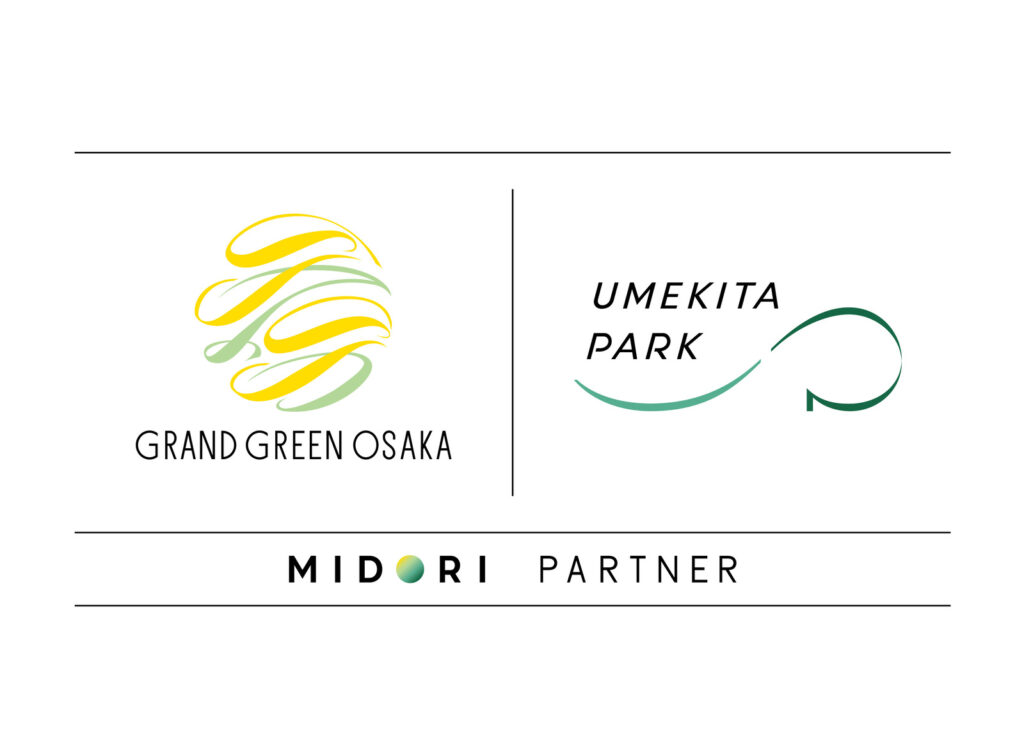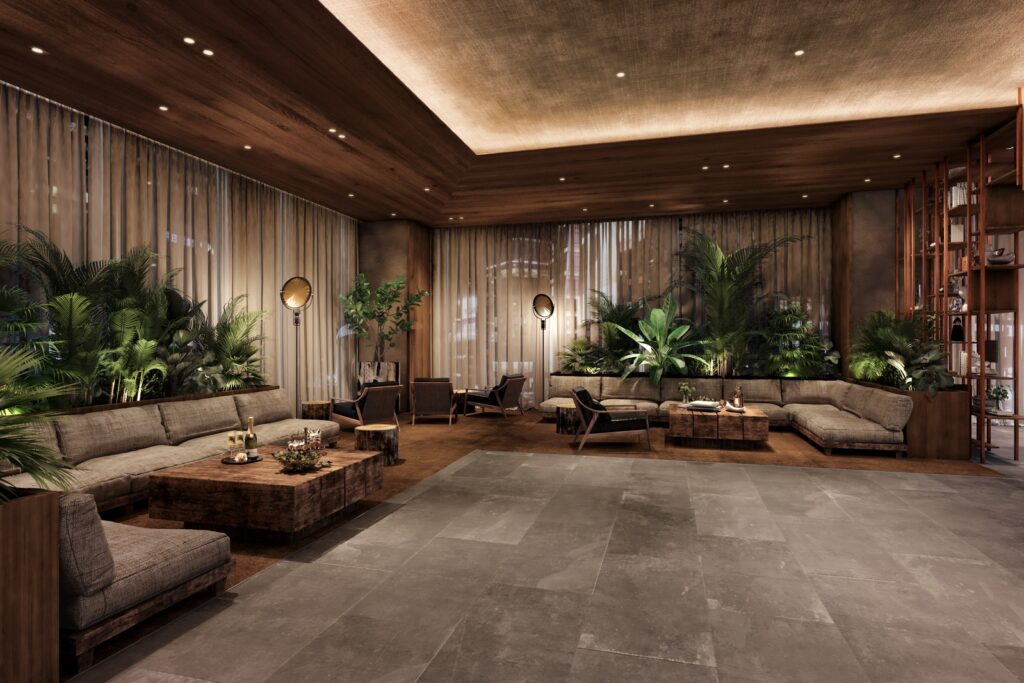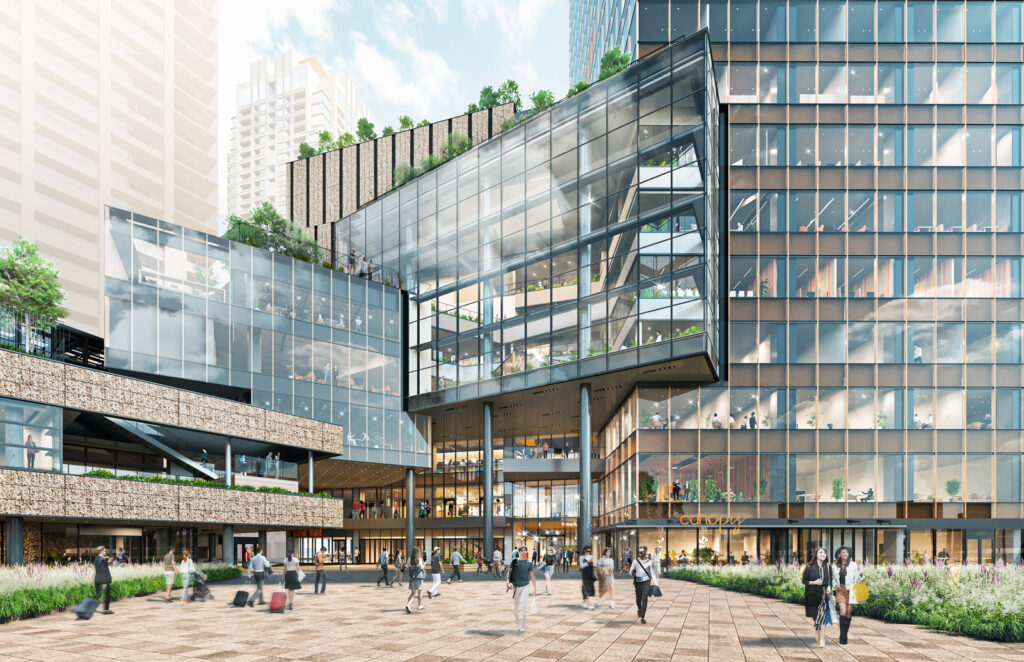Integrated management organization MMO for seamless operation of both area and park management
Theme:Umekita MMO General Incorporated Association (MIDORI Management Organization)
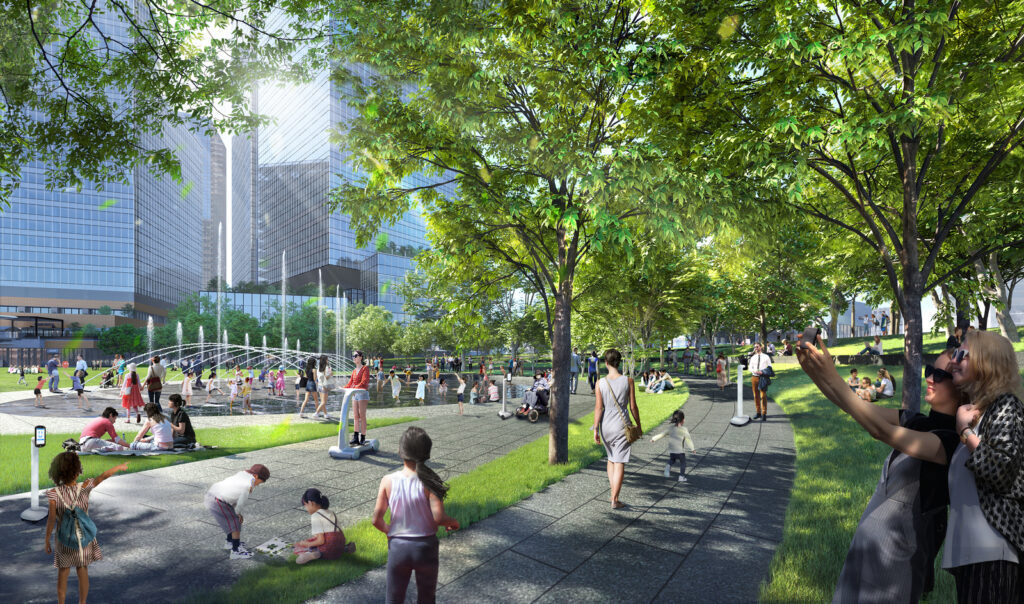
Grand Green Osaka is a new town centered around a magnificent urban park interlaced throughout with midori (greenery), and the Umekita MMO General Incorporated Association (hereafter, MMO, standing for Midori Management Organization) was established on June 1, 2023, to provide integrated management for both the park and the general area throughout the Umekita development zone in advance of its early-stage opening in around summer 2024.
We interviewed the people tasked with considering how best MMO can manage the park and general area in line with Grand Green Osaka’s vision for urban development.
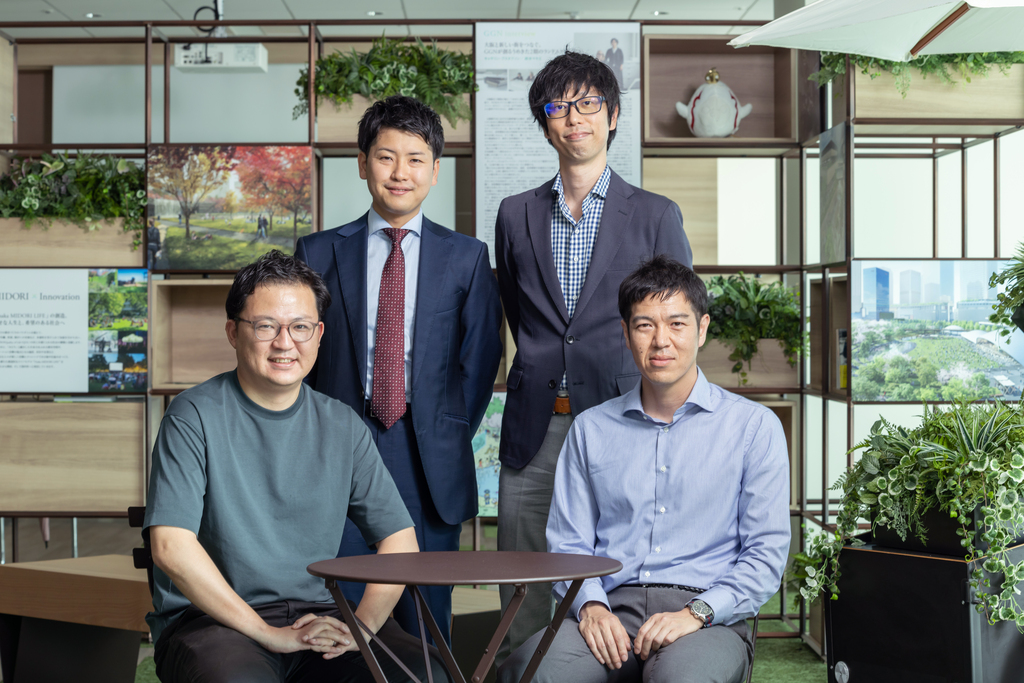
Shintaro Arimoto of the Mitsubishi Estate Company describes the background to the establishment of MMO, “Grand Green Osaka is being developed as a public space centered on an urban park of around 4.5 hectares through a public-private partnership. The various developers involved in Grand Green Osaka collaborated to establish MMO as an organization that would not only develop the park, but also subsequently manage it.”
MMO handles the park management as well as all area management related to urban development. It is rare in Japan for both to be handled by the same organization. Taikun Ohmata of the Hankyu Hanshin Properties Corporation explains why.
“For Grand Green Osaka, the urban park and its surrounding private facilities are to be developed and operated in an integrated manner. Thus, we needed a system that can cope with any future changes in the area from the early-stage opening scheduled for summer 2024, through the full opening of the rental buildings due in spring 2025, and thereafter. We also believe that this organizational format is the best way to ensure that the added value of the greenery throughout the park enhances the overall worth of Grand Green Osaka.”
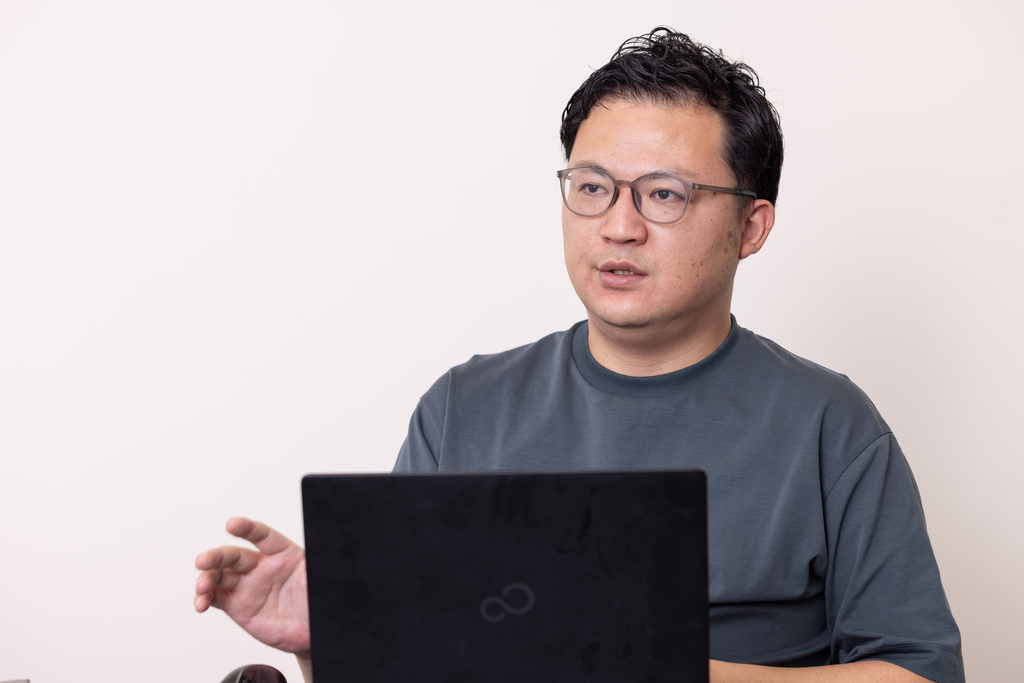
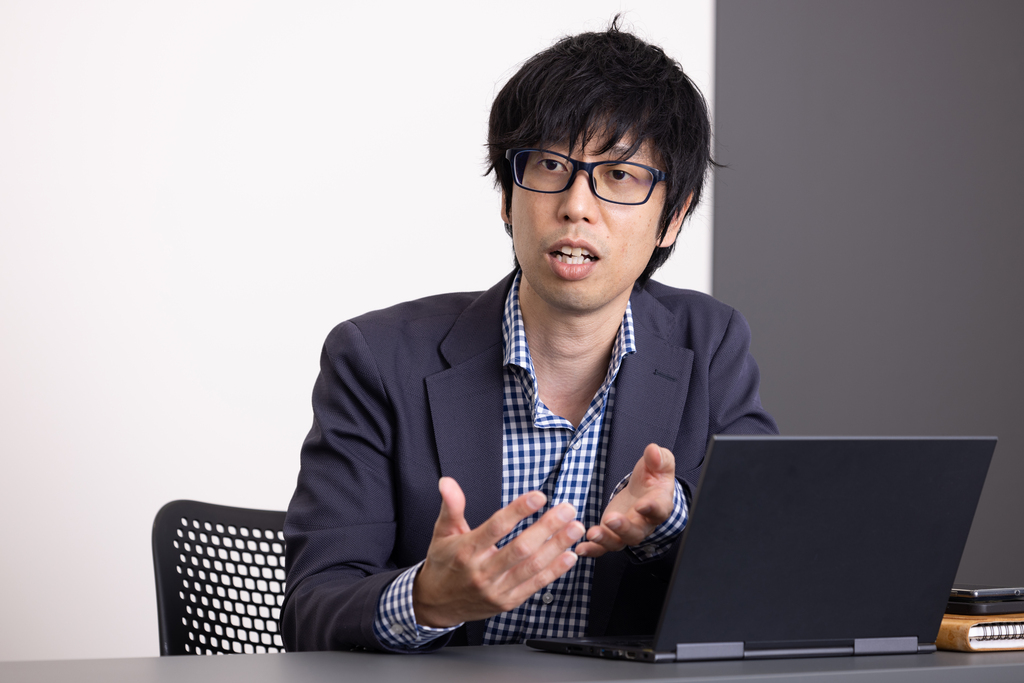
What sort of park-centric urban development, then, is MMO aiming for? Mr. Arimoto recalls that it was no easy task to resolve the conflicting visions for urban development of the nine different developers involved in Grand Green Osaka.
“There are many businesses involved in this project, and it was an unusual situation for us, being both a developer and general construction company engaged from the development stages of the park. Therefore, we took an overseas inspection trip together with the business operator, design company, and the GGN landscape design firm to ensure that we all shared a common view on what type of park we were trying to create.”
He notes that the 3.9-hectare Bryant Park run by New York City proved to be a particularly valuable reference point.
He explains, “Bryant Park is in a city center—just like Grand Green Osaka—with a station, office buildings, and busy shopping district around its periphery. The stage in the park regularly hosts performances, along with a variety of free programs and events, such as fencing and juggling. There is a spacious lawn in the center of the park, so even without any events on, we were impressed by how easily visitors could enjoy their time there. We also interviewed members of their local area management committees, and exchanged opinions on managerial options, how best to initiate programs, and the like. I think that as developers, we gradually formed a common awareness of what the ideal public space should offer through such inspection visits.”

Shinsaku Fukaya of the Obayashi Corporation adds, “Even after the overseas inspection trip, we continued discussions on what the public space should be like, how we wanted it to be used, and how to create that space based on our assumptions of how it would be used. As a result, GGN team members from Seattle frequently visited Japan, and at one point almost 100 people representing the designers, business operators, and so on got together in one room and held discussions from their varied perspectives to examine such questions and reach a consensus.”
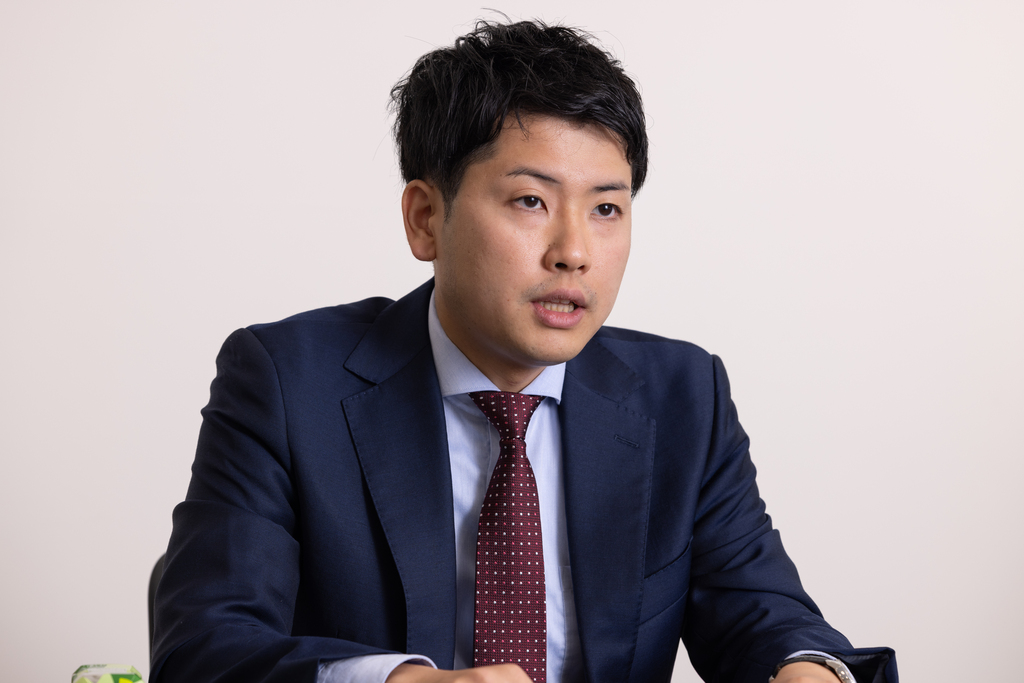
Accordingly, three action guidelines were drafted for a creative urban life that utilizes greenery-centric public spaces. The first was “Trial First”: to be an organization that constantly improves through a process of trial-and-error verification rather that striving for perfection right from the outset. Mr. Ohmata explains this action policy citing the specific example of the planting and maintenance of the park.
“A vast natural lawn that remains green throughout the year will be created in this new urban park, and we hope that many people will be able to use this attractive space. In order to accomplish this, we have been implementing our trial-first policy in the Umekita Sotoniwa Square demonstration site. For example, seven types of natural lawns are being grown and compared to verify the optimal lawn for the type of soil and environment in Umekita, and we are adopting new technology for robotic mowers among other efforts—I think we are producing good results while accumulating knowledge on park maintenance and management. We will be continuing with this trial-first policy for the park management.”
The second action guideline is “Diversity & Inclusion.” Mr. Higashimura of the Takenaka Corporation explains, “Our aim is to create a so-called satoyama environment—i.e., a mixed-use landscape with human activity in harmony with nature—in Osaka by mainly planting domestic species rather than the generic style adopted by most public parks, so that many different types of flora and fauna can be introduced from nearby ecosystems, such as Osaka Castle Park and the Yodo River. Furthermore, we hope to boost biodiversity by using the power of nature to improve the green infrastructure, such as by reusing rainwater, and ensuring the environment is properly taken into consideration during the development. We will also be working together with the public and private sectors in disaster response, as this park will serve as an evacuation site in the event of a local disaster.”
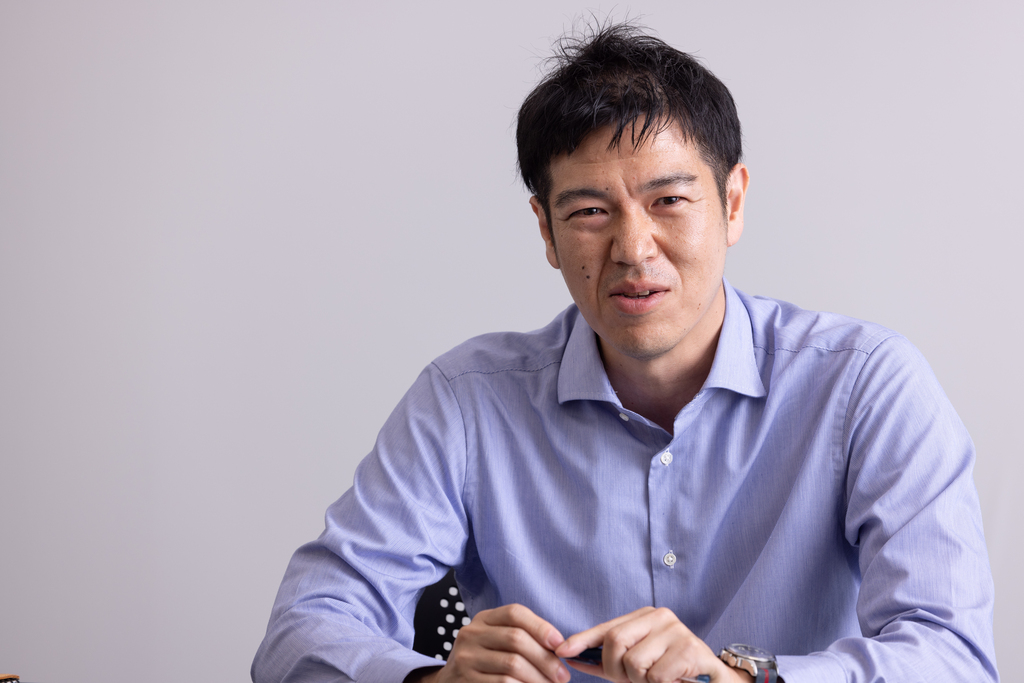
The third policy guideline is “Partnership.” Mr. Arimoto explains, “The Grand Front Osaka TMO General Incorporated Association, or TMO, has been tasked with area management for Grand Front Osaka, which is the early-stage development area. Through cooperation with TMO, we would like to utilize the knowledge we have gained at Grand Front Osaka to expand and deepen the redevelopment of the Umekita area. On the other hand, the very existence of an urban park adds a new public space not previously present at Grand Front Osaka, enabling us to attract different categories of visitors than before, such as local office workers, families, and inbound tourists accessing Kansai International Airport via the new station. Our aim is to create an urban park that a wide variety of people, including past visitors, can enjoy, while offering unique experiences and value by building partnerships with the many different parties concerned.”
Mr. Fukaya adds enthusiastically, “We hope to hold a wide variety of events and programs within this urban park to further enhance the park’s value. By adopting a trial-and-error approach, we hope visitors will be able to enjoy a unique urban park experience quite different from the typical park.”
An urban park at Grand Green Osaka exploring new possibilities for greenery and opening up a diversity of potential uses by visitors. This exciting public space should attract attention not only within Japan, but also from around the world.
Portrait photos: Sadaho Naito Text: Akiko Wakimoto

 Share on Twitter
Share on Twitter Share on Facebook
Share on Facebook